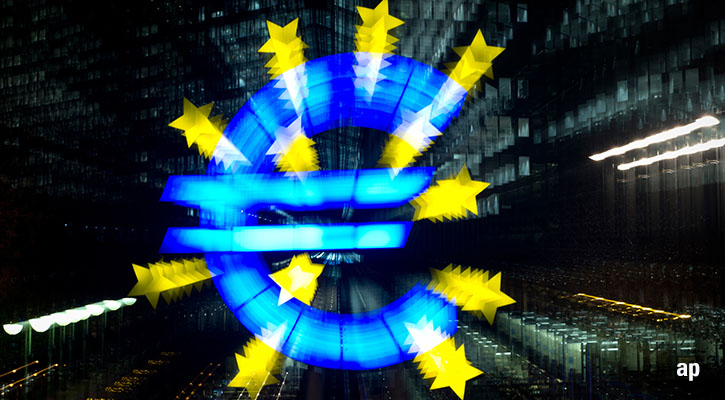
Inflation in the eurozone fell to 2.6% year on year in February, down from 2.8% in January, but core inflation was higher than expected at 3%. Here's what to expect from the April 3 inflation data which covers the month of March.
Markets are looking to flash eurozone inflation figures that are due by Eurostat at 11am Central European Time on Wednesday, April 3. The data release will come after the European Central Bank (ECB) lowered its inflation outlook in its March meeting, leading investors to expect the first interest rate cut in June.
Economists expectations are mixed. “Consensus has eurozone inflation falling to 2.5% in March, another leg down from last month 2.6% reading, albeit a small one,” said Michael Field, European equity market strategist at Morningstar.
According to Goldman Sachs, the headline Harmonized Index of Consumer Prices (HICP) – a measure of inflation in the eurozone - is expected to be 2.66% higher year on year in March, up from 2.59% in February. Core inflation – headline inflation excluding energy, food, alcohol, and tobacco – will remain unchanged at 3.10% on an annual basis.
Investment bank Nomura forecasts that headline HICP inflation will be unchanged in March (at 2.6%) and core inflation will decline to 2.9%.
In February, the highest contribution to the annual euro area inflation rate came from services (+1.73 percentage points, pp), followed by food, alcohol & tobacco (+0.79 pp), non-energy industrial goods (+0.42 pp) and energy (-0.36 pp).
Does Easter Affect Eurozone Inflation Data?
“We see significant uncertainty around the estimate given the early timing of Easter,” said Goldman Sachs in a note. However, they expect that eurozone core inflation will cool to 2.4% on annual basis in December 2024.
According to Nomura, upside risks from Easter being earlier this year than last year have been overstated, because “Easter lies right at the end of March, so it is unlikely to be captured in the survey of prices, which is usually undertaken at the middle of the month.” They also expect that electricity prices will be “broadly weaker across all euro area countries; however, aggregate euro area fuel prices are likely to rise.”
Will the ECB Cut Interest Rates Before June?
Christine Lagarde said that ECB will be unable to commit to a path of interest rate cuts, and most economists expect the first cut in June, when more data on wage slowing will be available. However, Financial Times reported that the newest ECB board member, Piero Cipollone, “has warned against an ‘excessive focus’ on waiting for slower wage growth,” so he may be prepared to argue for cutting rates in the next central bank’s meeting on April 11.
“The ECB seems leaning toward cutting official rates in June,” said Mauro Valle, head of fixed income at Generali Investments. “Given the weak macroeconomic environment, there are conditions to consider an early start in April, but the ECB prefers to take more time to ensure that upcoming inflation data do not present any negative surprises.”
Morningstar analyst Michael Field added: “The last mile is always the hardest, so for investors who thought the path to 2% from here would be easy, disappointment awaits. The ECB expects inflation to fall to 2.3% by the end of the year, so a 10 basis point fall in March would be a welcome development.”



























